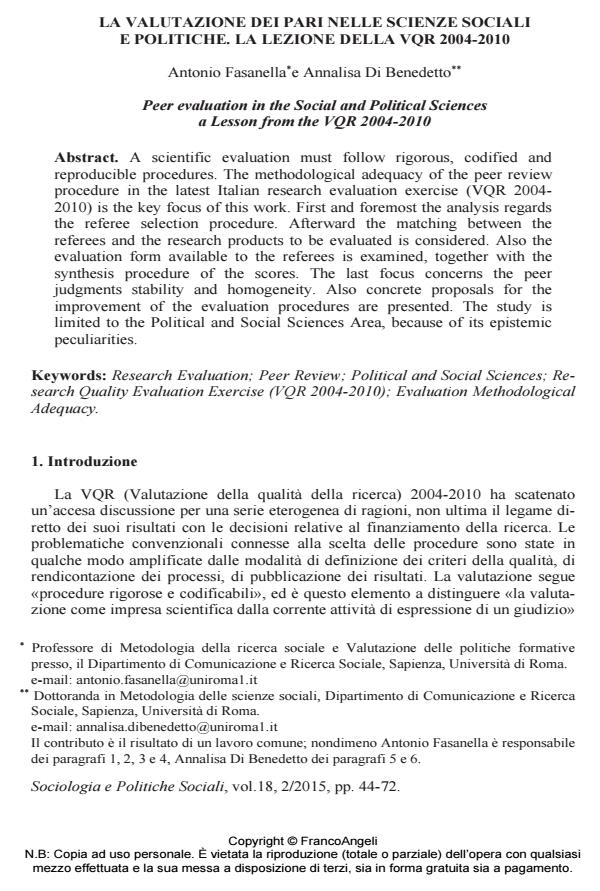La valutazione dei pari nelle scienze sociali e politiche. la lezione della VQR 2004-2010
Titolo Rivista SOCIOLOGIA E POLITICHE SOCIALI
Autori/Curatori Antonio Fasanella, Annalisa Di Benedetto
Anno di pubblicazione 2015 Fascicolo 2015/2
Lingua Italiano Numero pagine 29 P. 44-72 Dimensione file 163 KB
DOI 10.3280/SP2015-002003
Il DOI è il codice a barre della proprietà intellettuale: per saperne di più
clicca qui
Qui sotto puoi vedere in anteprima la prima pagina di questo articolo.
Se questo articolo ti interessa, lo puoi acquistare (e scaricare in formato pdf) seguendo le facili indicazioni per acquistare il download credit. Acquista Download Credits per scaricare questo Articolo in formato PDF

FrancoAngeli è membro della Publishers International Linking Association, Inc (PILA)associazione indipendente e non profit per facilitare (attraverso i servizi tecnologici implementati da CrossRef.org) l’accesso degli studiosi ai contenuti digitali nelle pubblicazioni professionali e scientifiche
A scientific evaluation must follow rigorous, codified and reproducible procedures. The methodological adequacy of the peer review procedure in the latest Italian research evaluation exercise (VQR 2004- 2010) is the key focus of this work. First and foremost the analysis regards the referee selection procedure. Afterward the matching between the referees and the research products to be evaluated is considered. Also the evaluation form available to the referees is examined, together with the synthesis procedure of the scores. The last focus concerns the peer judgments stability and homogeneity. Also concrete proposals for the improvement of the evaluation procedures are presented. The study is limited to the Political and Social Sciences Area, because of its epistemic peculiarities.
Parole chiave:Research Evaluation; Peer Review; Political and Social Sciences; Research Quality Evaluation Exercise (VQR 2004-2010); Evaluation Methodological Adequacy
- Considerazioni metodologiche sulla Vqr 2011-2014 e possibili sviluppi della valutazione Antonio Fasanella, Fabrizio Martire, in SOCIOLOGIA E RICERCA SOCIALE 114/2017 pp.89
DOI: 10.3280/SR2017-114005 - Un'analisi del concetto di qualità della ricerca nella Vqr Annalisa Di Benedetto, in SOCIOLOGIA E RICERCA SOCIALE 108/2016 pp.95
DOI: 10.3280/SR2015-108005
Antonio Fasanella, Annalisa Di Benedetto, La valutazione dei pari nelle scienze sociali e politiche. la lezione della VQR 2004-2010 in "SOCIOLOGIA E POLITICHE SOCIALI" 2/2015, pp 44-72, DOI: 10.3280/SP2015-002003